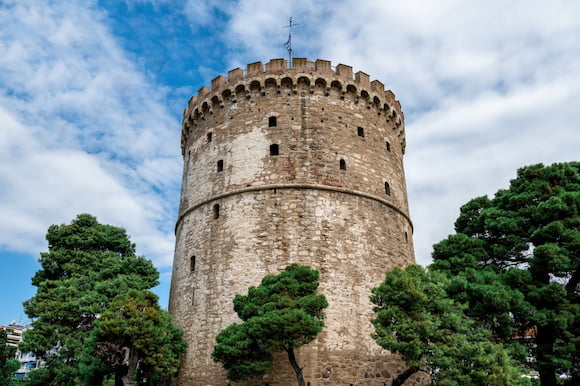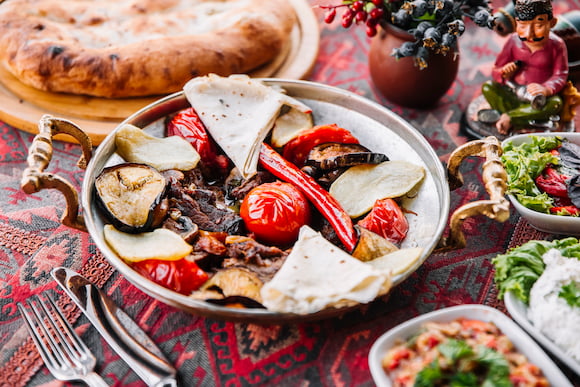Serbia, a country steeped in rich history and vibrant culture, offers visitors a unique and unforgettable experience. From its ancient roots to its modern-day celebrations, this Balkan nation has so much to offer. In this blog post, we will explore the captivating history of Serbia, delve into its diverse culture and traditions, marvel at the impressive Serbian monuments, savor the delicious cuisine that has put this country on the map, discover the must-visit cities that showcase the best of what Serbia has to offer, and join in the festivities of Serbian festivals and celebrations. Join us on a journey through the heart of this enchanting country and discover why Serbia should be at the top of your travel bucket list.Discover the rich history, vibrant culture, famous monuments, delicious cuisine, must-visit cities, and lively festivals of Serbia in this comprehensive blog post.

Serbia has a rich and diverse history dating back thousands of years. It has been a crossroads of different cultures and civilizations, which have left their mark on the country's development. From ancient times to the present day, Serbia has been shaped by various influences, including Roman, Byzantine, Ottoman, and Austro-Hungarian.
One of the most significant events in Serbia's history was the Battle of Kosovo in 1389, where Serbian forces fought against the invading Ottoman Turks. Although the battle ended in a defeat for Serbia, it became a symbol of Serbian resistance against foreign invaders and a source of national pride.
In the 19th century, Serbia gained independence from the Ottoman Empire and went through a period of modernization and industrialization. The country played a key role in the Balkan wars and World War I, and later became part of the Kingdom of Yugoslavia.
Serbia has a rich and diverse cultural heritage that is deeply rooted in its history. The country's culture is influenced by various factors such as its geographic location, historical events, and the traditions of its people. Serbian culture is known for its music, dance, literature, art, and architecture.
One of the most important aspects of Serbian culture is the tradition of Slava, which is a religious celebration unique to the Serbian Orthodox Church. It involves celebrating the patron saint of the family, and is a time for gathering with loved ones and sharing food and drink. Another important tradition is the Kolo, a traditional Serbian dance that is performed at weddings, festivals, and other special occasions.
Serbian culture is also known for its delicious cuisine which includes dishes such as cevapi, sarma, and ajvar. The country's cuisine is a reflection of its history and geography, with influences from Turkish, Hungarian, and Austrian cuisines. Serbian cuisine is characterized by its use of fresh ingredients, bold flavors, and hearty portions.
Belgrade Fortress: One of the most famous landmarks in Serbia, the Belgrade Fortress is a symbol of the country's rich history. Built in the 3rd century, this fortress offers stunning views of the confluence of the Sava and Danube rivers.
Petrovaradin Fortress: Located in Novi Sad, this fortress is famous for its breathtaking views of the city and surrounding landscape. Dating back to the 17th century, Petrovaradin Fortress is a must-visit for history enthusiasts.
Golubac Fortress: Situated on the Danube River, Golubac Fortress is a medieval marvel with its impressive towers and walls. Originally built in the 14th century, this fortress has played a significant role in the region's history.

Serbian cuisine is a delightful combination of flavors and ingredients that have been influenced by various cultures throughout history. The traditional dishes are known for their rich taste and hearty portions, making them perfect for satisfying hunger and warming the soul.
One of the most famous dishes in Serbian cuisine is cevapi, which are small grilled sausages made from a mix of ground meats and spices. They are typically served with lepinja, a type of bread, and topped with chopped onions and kajmak, a creamy dairy product.
Another popular dish is pljeskavica, a type of grilled meat patty that is often served with ajvar, a red pepper-based condiment, and urnebes, a spicy cheese and pepper spread. These dishes are often enjoyed with a side of crispy fried potatoes or salad made with fresh vegetables.

When planning a trip to Serbia, there are several cities that should be at the top of your must-visit list. One of these cities is Belgrade, the capital and largest city of Serbia. Belgrade is a vibrant metropolis with a rich history and a thriving nightlife scene. Visitors can explore the historic Belgrade Fortress, stroll down the bustling Knez Mihailova Street, and enjoy traditional Serbian cuisine at one of the many restaurants in the city.
Another must-visit city in Serbia is Novi Sad, located in the northern part of the country. Novi Sad is known for its picturesque architecture, charming old town area, and annual EXIT music festival. Visitors can wander through the cobblestone streets of the city center, visit the Petrovaradin Fortress overlooking the Danube River, and sample local wines at one of the many vineyards in the surrounding area.
One more city that should not be missed when visiting Serbia is Niš, the third-largest city in the country. Niš is steeped in history, with attractions such as the Niš Fortress, the Skull Tower, and the Ćele Kula monument. Visitors can also explore the vibrant food scene in Niš, which includes dishes such as pljeskavica, a type of grilled meat patty, and burek, a savory pastry filled with meat or cheese.
Serbia is a country rich in cultural heritage and traditions, and one of the best ways to experience this is by attending Serbian festivals and celebrations. From religious holidays to music and dance festivals, there is always something happening in Serbia to celebrate the country's history and culture.
One of the most famous Serbian festivals is the Guca Trumpet Festival, held annually in the town of Guca. This lively event celebrates traditional Serbian music and features brass bands from all over the country competing for the title of best trumpet player. Visitors can enjoy music, dancing, and delicious Serbian cuisine while immersing themselves in the vibrant atmosphere of the festival.
Another popular event is the Belgrade Beer Fest, which takes place in the capital city of Belgrade. This five-day festival showcases a wide variety of local and international beers, as well as live music performances and entertainment. It is the perfect opportunity to sample different beers, enjoy the music, and experience the lively spirit of Belgrade.
